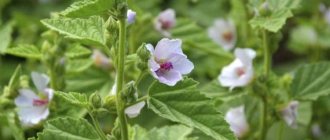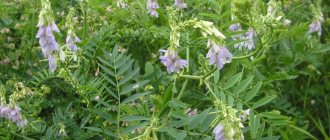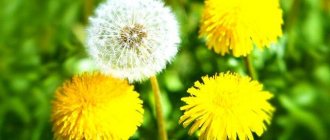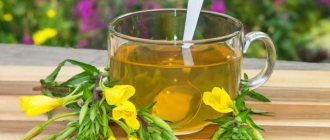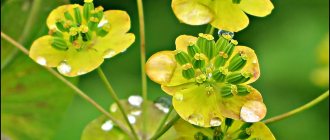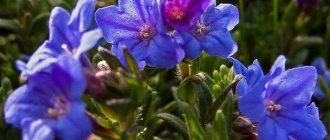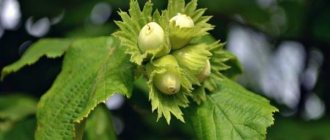Questions, answers, reviews on the drug Gulyavnik officinalis
You can look at questions about the drug, as well as ask your question to a specialist, using a free consultation with a pharmacist or pharmacist.
The information provided is intended for medical and pharmaceutical professionals. The most accurate information about the drug is contained in the instructions supplied with the packaging by the manufacturer. No information posted on this or any other page of our website can serve as a substitute for personal contact with a specialist.
| * | Our site does not sell medicines and other goods; they must be purchased in pharmacies, in accordance with current laws. Data on prices and availability in pharmacies is updated twice a day. Current prices can always be seen in the section Searching and ordering medications in pharmacies. |
Description and where it grows
Sisymbrium officinale is a herbaceous plant of the Brassica family, up to 50 cm tall. It has a straight, branched stem with a round cross-section. The root of the medicinal grass is thin, with long thread-like shoots, and goes deep into the soil. The basal leaves are pinnately dissected with oblong terminal feathers, and the upper plates are lanceolate or arrow-shaped, small and sessile. The frogwort blooms in May with small, pale yellow flowers with four petals and several stamens. The buds are collected in compact racemose spikelets.
The decorative period of the medicinal party continues until November
In the world, you can see the medicinal reveler in temperate regions of the Northern Hemisphere, as well as in South Africa and the Andes. The plant is widespread throughout Russia - in Siberia, the Far East, the European part and the Caucasus. It is found on roadsides and in fields, in unkempt gardens and vegetable gardens, under the walls of buildings. Despite its many valuable properties, it is considered a weed.
Description of the fruits of Gulavina officinalis
The fruits on the stems of medicinal grass appear from July to late autumn and are bivalve, multi-seeded elongated pods on short stalks. Inside are round or trapezoidal seeds of grayish-brown or red-brown color. The length of each grain does not exceed 1.2 mm. The pods of the frogweed are tightly pressed to its stem.
Attention! The seeds of the plant are poisonous and are not used for food or medicinal purposes.
On average, up to 1000 seeds can be obtained from the fruits of one medicinal bush
Collection and storage
The main medicinal raw materials of the gulavnik are its stems and leaves. Features of collecting raw materials are:
- Despite the fact that the flowering of grass begins in late spring and ends in late autumn, it is recommended to collect grass exclusively in the summer; this is due to the fact that at this time the grass contains the highest content of healing substances.
- The stem of the plant must be cut carefully with scissors or a sickle at an angle of 45%.
- It is recommended to harvest the entire above-ground part - stem, leaves, flowers and fruits.
After collecting the raw material, it is dried, spreading it in a thin layer in a place protected from the sun. After drying, it can be stored for no more than 12 months. It is important to know that fresh parts of the plant contain more medicinal properties.
X
Notes
- For the convention of indicating the class of dicotyledons as a superior taxon for the group of plants described in this article, see the section “APG Systems” of the article “Dicotyledons”.
- Gubanov, I. A. et al.
Wild useful plants of the USSR. - M.: Mysl, 1976. - P. 140-141. — 360 s. - Gubanov et al., 2003.
- ↑ 12
Novikov, 2008. - According to the GRIN website (see Links section).
- ↑ 1 2 3 4 5 6 Gubanov I.A. et al.
Wild useful plants of the USSR / resp. ed. T. A. Rabotnov. - M.: Mysl, 1976. - P. 140. - 360 p. — (Reference books for geographers and travelers).
Contraindications
Homeopaths recommend that hypertensive patients and patients with pyelonephritis use gulavnik officinalis preparations carefully during periods of exacerbation. Experts also warn against exceeding the dosage of folk remedies with a walker, since they slow down the contractile activity of the heart muscle. It is prohibited to use the walker for treating children.
Everyone knows the ancient rule of medicine, which sounds like this: “Do no harm!” It is also relevant in folk medicine, because herbs have no less effect on the human body than any pharmaceutical drugs, especially when we are talking about potent plants with a rich composition that contain alkaloids, the effect of which on the body is poorly studied.
- Nephritis, pyelonephritis and other kidney diseases in the acute stage, renal failure. After undergoing kidney surgery or crushing stones during the recovery period, it is not advisable to use the herb to avoid bleeding.
- Hypertension, a tendency to high blood pressure, problems with the patency of blood vessels in the brain.
- In case of serious liver damage, it is not recommended to use plant seeds, which contain a lot of fats and toxins that are broken down and neutralized by this organ.
The main thing is not to use the herb if you are allergic to it. And of course, you shouldn’t be treated with a party bug during pregnancy and breastfeeding - the effect of biologically active substances on the body of the mother and fetus has not been fully studied, so the consequences can be unpredictable.
- Caution should be exercised when using drugs based on Gulyavnik officinalis in cases of hypertension and pyelonephritis during periods of exacerbations.
- The use of the plant in the treatment of childhood diseases is not recommended, and overdose should be avoided so as not to cause a slowdown in the functioning of the heart muscles.
Rules and recipes for admission
For maximum therapeutic effect, gulavnik officinalis is used in combination with other herbs. All collections are prepared in the same way: 10 grams of raw materials are taken per half liter of hot water. The solution should be left for three hours so that it absorbs all the beneficial properties. Used orally three times a day. Depending on the pathology, different herbs are used.
- A collection of celandine, coriander fruits, steelweed roots, gulyavnik leaves, bud tea shoots, hop fruits and creeping tribulus helps well against inflammation of the bladder and urethritis. The infusion is drunk for 30 days.
- The following collection will help you get rid of amenorrhea (lack of the menstrual cycle): take the leaves of wintergreen, wildflower, heather, eryngium, celandine, wormwood, centaury, jasmine, mistletoe shoots, and licorice roots. The plants are brewed in equal proportions. The course of therapy with this decoction is 2-3 months.
Let us describe the recipe for a single use of the herb:
- The following infusion will help alleviate the symptoms of acute respiratory infections, relieve inflammation in the kidneys, bladder, and get rid of respiratory diseases and diarrhea. For a glass of boiling water you will need dried medicinal gulyavnik (25 g). Leave the solution for two hours, filter and drink 10 ml with honey three times a day. The same product is used to wipe wounds, cuts, bedsores, and frostbite.
- For gastrointestinal diseases: a tablespoon of dried parts of the herb should be crushed in a coffee grinder or mortar, combined with 250 ml of water, boiled for 15 minutes. in a water bath. The infusion is used orally in strained form, 50 grams three times a day.
Fresh herb gulyavnik (medicinal), popularly called arugula, will help get rid of vitamin deficiency. Served in combination with vegetables and meat dishes. Perfectly accompanies fish products. To preserve nutrients, it is recommended to eat fresh and not heat-treated.
Botanical description
Sofia's desmoking (left). Botanical illustration by Jacob Sturm from the book Deutschlands Flora in Abbildungen
, 1796
Annual herbaceous plant[4].
The root is taproot, branched.
The stem is protruding-straight, branched, 10-80 cm tall, grayish, pubescent.
The leaves are alternate, sessile, double or triple pinnately dissected, 1.5-8 cm long, 0.8-3 cm wide, with auricles at the base, pubescent.
The flowers are pale yellow, collected in a shield. The petals are small, sometimes underdeveloped, oblong-obovate, narrowed at the base into a long nail, longer than the plate. After fruit formation, a long raceme is formed, 6-40 cm long.
The fruit is a multi-seeded pod, 10-30 mm long, with convex valves and a prominent midrib. The seeds are oval, compressed, folded, yellowish-brown.
It blooms from May to August, bears fruit until September.
Properties of a reveler
The medicinal gulavnik has a beneficial effect on the body and improves well-being when used correctly. In particular, the plant:
- helps cope with diseases of the respiratory system;
- stops bleeding and relieves inflammation;
- lowers blood sugar and benefits diabetes;
- normalizes digestive processes in chronic gastritis and pancreatitis;
- promotes gum healing in case of dental diseases;
- improves the condition of blood vessels and normalizes heart function;
- helps with dermatitis, eczema and other skin ailments;
- improves appetite and stimulates intestinal motility;
- cleanses the liver of toxins;
- removes toxins from the body and promotes weight loss;
- stops diarrhea;
- promotes expectoration and reduces fever during colds.
We recommend reading: Spring primrose (primrose): beneficial properties, contraindications
In home cosmetology, gulavnik is used in anti-aging masks against the first wrinkles. The plant increases skin elasticity, improves cellular metabolism and promotes damage healing.
Use in folk medicine
- For bronchitis (as an expectorant) , colds, pneumonia, hoarseness, general weakness, kidney inflammation and bladder diseases, an infusion is prepared from the same amount of fresh crushed leaves and boiling water. After an hour of infusion, squeeze out the juice and take a tablespoon 2-4 times a day. The same product can be used to lubricate wounds, ulcers, cuts, abrasions, and bedsores. Treatment of wounds in combination with the use of raincoat mushrooms gives excellent results. After washing the wound, pieces of mushrooms are applied to it and fixed with a bandage.
- A less concentrated decoction (25 grams of crushed herbs per 200-250 milliliters of boiling water) is infused for 2-3 hours, filtered and consumed warm 30-40 minutes before meals 3-5 times a day. This remedy is effective for diarrhea, tuberculosis, and scurvy . To make the taste of the drink more pleasant, you can add a spoonful of honey to it.
- An infusion of the herb (1 tsp per 200 ml of boiling water) is used for gargling for tonsillitis and sore throat , as well as for rinsing the mouth for stomatitis.
- For stomach pain and prolonged diarrhea, tea from the shoots is used . To prepare it, pour a teaspoon of chopped young shoots into a glass of boiling water. Leave for 3-5 minutes and drink with honey, like tea.
- Young shoots and leaves of the plant are added fresh to vegetable salads . Such dishes go well with sour cream dressing and walnuts. The leaves are also used as a spicy and aromatic additive to fish and meat dishes, which can be supplemented with buckwheat porridge.
- Gulyavnik officinalis extract is used as a laxative (the dosage is prescribed by the doctor in each individual case).
- A yellow dye used to dye fabrics is obtained from the flowers of the plant.
- The seeds are used as an anthelmintic.
Plant raw materials
Herbs (stems, leaves, flowers), young pods, roots, and flowers are used for medicinal purposes. The roots are harvested after the fruits ripen in August - September, the seeds - as the pods ripen, grass and leaves - during the flowering of the plant.
All parts of the plant contain saponins, coumarins, alkaloids, alcohols, steroids, organic acids, cardenolides, thioglycosides, mineral salts; the leaves contain vitamins (C, E and P), pigments; in the seeds - fatty oil (up to 30%[6]), containing arachidonic, linoleic, erucic and other fatty acids, up to 1.5% sinigrin glycoside, which, when broken down, gives 0.9% allyl mustard oil, which determines the taste and smell of mustard [6], as well as organic acids.
Plant preparations have astringent, diuretic, stimulant, antiemetic, anthelmintic, anti-inflammatory, antiseptic, wound-healing, expectorant and hemostatic effects.
What are the beneficial properties of the plant?
The herb is very valuable due to the beneficial elements included in its composition. Here you can find essential oils, beneficial glycosides and flavonoids, as well as oleic acid, many vitamins and minerals.
In ancient times, this plant was used by singers to restore their voice. In this case, the therapeutic effect occurred within a couple of days. Scientists have also proven that the product has expectorant, anti-inflammatory, diuretic and astringent effects.
Also, the upper part of the plant is used to treat the respiratory system. However, unfortunately, the herb has not been proven to have an antibacterial effect.
It is also used by women for cosmetic purposes. In many countries, skin care products based on this plant are produced. Such cosmetics are great for mature skin, as they can fight the signs of aging.
Do not forget that this representative of the plant world is capable of restoring his voice. Stage workers and people who smoke should think about this. To do this, you need to prepare an infusion and gargle with it several times a day.
Application and medicinal properties
This unpretentious plant - a medicinal plant from the cruciferous and cabbage family, growing in weedy places, has absorbed the power of nature and has long endowed people with the healing properties of its stems, leaves, flowers and pods. They are collected in the summer, dried, after which you can feel the strong aroma of cabbage. From these raw materials, various medicinal alcohol tinctures and syrups with excellent characteristics are then prepared.
It was widely used by the healers of Ancient Greece, and the American Indians also used it as a food plant. Gulavnik officinalis was very popular among speakers who have to strain their voice during a speech, and it is not for nothing that in France it is called the herb of vocalists.
After all, he is able to restore his voice in cases of loss of it (aphonia). To do this, you need to gargle 3-4 times a day with a healthy infusion prepared according to the following recipe: 5 g of dried herb, pour 200 ml of boiling water, leave for 10 minutes. And for pneumonia, laryngitis, pharyngitis, scurvy, this infusion is taken orally 4 times a day.
The juice of the plant, mixed in equal parts with water, is an excellent expectorant and is often used in folk medicine.
Young fresh leaves can be used for external treatment of catarrhal tonsillitis, stomatitis, ulcers and open wounds, and can also be added to salads, vinaigrettes, broths, and vegetable soups.
Gulyavnik officinalis is very effective in treating general weakness, chronic gastritis with secretory insufficiency, colds, eliminating irritation of the nasopharynx, and hoarseness.
Its infusions and decoctions are also a good diuretic, astringent, appetite enhancer, and anti-inflammatory agent.
The cardenolides present in the seeds can have a stimulating effect on the heart muscle, similar to the alkaloids of such a medicinal herb as foxglove.
Contraindications
Along with all the advantages of this plant, it should be borne in mind that gulavnik officinalis is not recommended for the treatment of children and its overdose in adults is unacceptable in order to avoid arrhythmia and slow heart rate.
This plant contains cardenolides, tannins, flavonoids, carotene, thioglycosides and even ascorbic acid. The seeds of the plant contain palmitic, arachidic, oleic, eicosenoic acids, as well as mustard oil and vitamin C. Thanks to this rich composition, gulavnik is used as an astringent, anti-inflammatory, expectorant, diuretic and appetite enhancer.
The opinions of modern scientists regarding the benefits of gulyavnik are divided - some consider it ineffective in herbal medicine, while others, on the contrary, emphasize the power of the rich chemical composition of gulyavnik and propose to reconsider the attitude towards it. However, traditional medicine never waited for the final verdict from science and used the herb successfully in the treatment of a number of dangerous diseases. Let's consider what are the beneficial properties of gulavnik officinalis?
- Most of all, the plant is effective for coughs - the antitussive and expectorant effect is very pronounced and therefore the herb is used independently or as part of a mixture to eliminate problems associated with the respiratory system.
- The beneficial effect on the body as a whole was noted several centuries ago. With the help of the walker, scurvy, weakness, dystrophy and exhaustion of the body were treated. The plant stimulates the immune system, saturating the body with essential vitamins and microelements.
- The herb has a beneficial effect on the health of the urinary system, has a diuretic and anti-inflammatory effect, prevents swelling and the development of urolithiasis.
- The flowers contain bitter substances that stimulate the receptors of the mucous membrane of the digestive organs and promote the production of enzymes, so the herb is useful for diseases of the stomach, gall bladder, and pancreas. The plant can be used for indigestion and poor appetite.
- Gulyavnik officinalis is also useful for the skin - its antiseptic and anti-inflammatory effects allow it to be used topically to treat rashes, scabies, ulcers, irritation, and acne.
- Gulyavnik has antiseptic and antifungal properties and is used to treat dental problems - stomatitis, diseases of the gums and teeth. It is also used for skin and nail fungus and dandruff.
READ MORE: Georgian eggplants for the winter - the best cooking recipes with photos
In general, gulavnik officinalis has a positive effect on the human body, cleanses it and promotes rejuvenation, slows down pathological processes occurring in the body, strengthens the immune system and eliminates inflammatory processes.
- Flowering plants of the bush have medicinal properties due to the content of cardenolides, tannins, flavonoids, carotene, thioglycosides and ascorbic acid.
- The seeds of the plant contain a number of acids, such as palmitic, arachidic, oleic, eicosenoic, mustard oil and vitamin C.
- Infusions and decoctions based on gulavnik have astringent, anti-inflammatory, expectorant, diuretic properties, and can also increase appetite.
- Gulyavnik is used only in folk medicine, but the history of its use goes back centuries.
- Decoctions based on it have long been used to treat pneumonia, bronchial asthma, bronchitis and laryngitis, and pulmonary tuberculosis.
- Externally used to heal wounds, abrasions, scratches, bruises and scabies.
- As a mouthwash, it can cure various types of stomatitis.
- Decoctions from the goulivnik are useful for inflammation of the genitourinary system, gastritis and gastrointestinal diseases, and also eliminate general weakness of the body.
- The aerial part of the plant is used by traditional healers in a number of countries around the world for dysentery, cough, shortness of breath, scurvy, and also as an anthelmintic drug.
- According to data that is not fully confirmed by science at the moment, the walker is capable of curing cancer.
Food use
While engaged in breeding, scientists have long seen in the wild grass an excellent material for creating a new, absolutely edible, vitamin-rich variety. They succeeded - this is the well-known arugula. Eruka is nothing more than a cultivated caterpillar (Eruca tourn.), its characteristics completely coincide with cruciferous walkers. For those who follow a healthy diet, arugula is the first product that not only gives food a piquant taste, but also brings benefits. The caterpillar is healthy, juicy, and helps preserve youth and beauty. Enriches the body of pregnant women with folic acid and helps men maintain a high level of sexual activity.
The officinalis is not much inferior to arugula. Leaves and shoots do not remain young and juicy for long, this is the only drawback. Young parts are edible. Those who want to add a spicy taste to their dishes add fresh or dried leaves to their food. Used as independent salads and in combination with other ingredients. Dry leaves are a good seasoning for meat and fish. A seasoning similar to mustard in taste is prepared from the seeds. Residents of the Caucasus, Iran, and Afghanistan prepare the seasoning from the leaves, and the Greeks eat the leaves with all vegetables.
Vitamin salad
Wash young leaves of wild mustard, plantain, dill, parsley (in arbitrary quantities). They tear it with their hands, season it with sour cream, and add salt.
For masculine strength
100 g of fresh leaf, a tablespoon of black pepper and honey. Stir and take a teaspoon in the morning.
Salad with tomatoes
They are tearing the bun of a young reveler with their hands. Place in a salad bowl along with a dozen cherry tomatoes and mozzarella cheese. Pomegranate seeds, pine nuts - optional, taste and availability. The salad is sprinkled with balsamic vinegar and seasoned with olive oil.
The above-ground part of the plant is harvested for medicinal purposes
